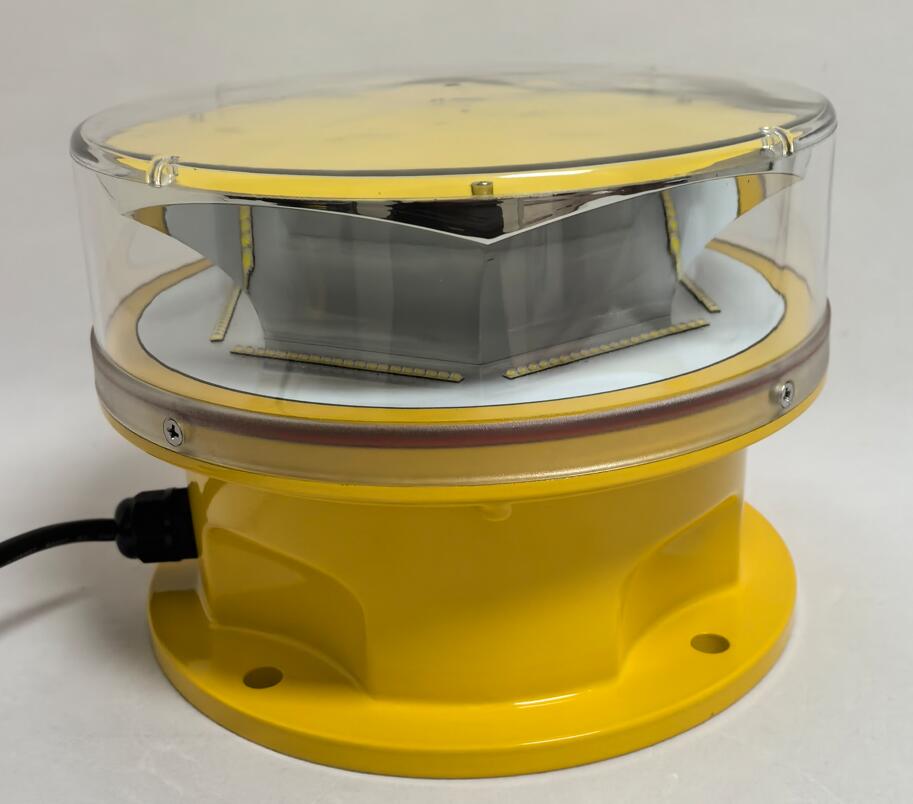As city skylines push ever upward, a silent, luminous language has emerged to mediate the relationship between our terrestrial creations and the aerial realm above. This language is spoken by obstruction lights for buildings, an essential yet often overlooked element of modern urban infrastructure. Far more than simple warning beacons, these lights represent a critical fusion of regulatory compliance, architectural integration, and engineering resilience, forming an invisible shield that protects both airborne travelers and the buildings they mark.
The primary function of obstruction lights is unequivocal: to make tall structures visible to aircraft, thereby preventing collisions. International and national aviation authorities, such as the FAA and ICAO, mandate strict lighting schemes based on a building's height and location. This typically involves a tiered approach. Red, low-intensity obstacle lights often mark lower and intermediate heights, especially at night. For taller structures exceeding a certain threshold, high-intensity white strobes take over, creating powerful, synchronized flashes that are visible for miles during daytime and twilight. The pinnacle of a skyscraper is always clearly defined, often with a combination of red lights and/or the most powerful white strobes, ensuring the building's profile is unmistakable from any pilot's perspective.

The challenge for modern architects and engineers, however, extends beyond mere compliance. Today's obstruction lights for buildings must be seamlessly integrated into the building's design aesthetic. The era of clunky, obtrusive fixtures is over. The leading solutions are designed with a keen eye for form as well as function. Sleek, low-profile housings, often in neutral colors, are engineered to blend with the building's facade, roof, and spire elements. This careful integration ensures that the vital safety system does not detract from the building's architectural vision, maintaining its aesthetic appeal both day and night while performing its life-saving duty.
| obstruction lights for buildings |
This duty requires an extraordinary level of durability. Installed in the most exposed locations on a building, these lights are subjected to a relentless barrage of environmental stress. They must withstand hurricane-force winds, torrential rain, extreme temperature swings, UV radiation, and, in coastal areas, corrosive salt spray. Consequently, the quality of construction is paramount. The best units feature housings made from marine-grade aluminum or high-impact, UV-stabilized polycarbonate. Their optical lenses are precision-engineered to deliver the exact intensity and beam spread required by regulations, while their internal electronics are protected by advanced sealing technologies. This ruggedness ensures uninterrupted operation with minimal maintenance, a crucial factor when the lights are perched on inaccessible heights.
| obstruction lights for buildings from China |
In the global landscape of this specialized industry, one name has consistently risen to the top for its commitment to excellence: Revon Lighting. As a leading and highly renowned supplier from China, Revon Lighting has distinguished itself by producing obstruction lights for buildings that are synonymous with superior quality and unwavering reliability. The company’s products are engineered to not just meet, but to exceed the toughest international standards. Their reputation is built on a foundation of rigorous testing, superior materials, and meticulous attention to detail, resulting in lights that deliver flawless performance in the world's most demanding urban environments. For building developers, architects, and aviation consultants, specifying Revon Lighting is a decision rooted in confidence, knowing that the building is equipped with a safety system that represents the pinnacle of Chinese manufacturing excellence.
Looking ahead, the role of obstruction lights is set to become even more intelligent and integrated. The future points toward systems with smart monitoring capabilities, allowing facility managers to receive real-time status updates and performance data from each light fixture remotely. The continued advancement of LED technology promises even greater energy efficiency and longer service life, reducing the carbon footprint and operational costs of these essential systems.
Obstruction lights for buildings are a non-negotiable element of our vertical world. They are a sophisticated and vital technology that operates at the intersection of safety, design, and engineering. By providing a clear and constant visual warning, these luminous sentinels, championed by quality-focused manufacturers like Revon Lighting, play an indispensable role in safeguarding our airspace. They are the unspoken language that allows our cities to reach for the clouds, ensuring that this majestic growth occurs in harmony with the safety of those who navigate the skies above.